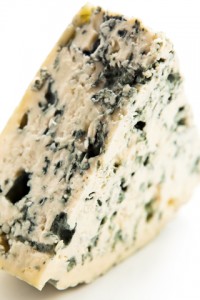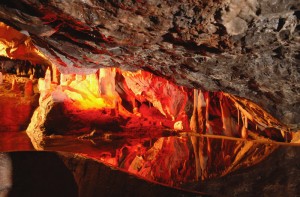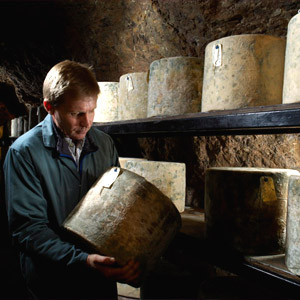
Blue cheese
Out of the blue, a man talking about blue cheese and caves! Interesting enough on its own to maybe tune in and listen. Then, he mentions that magic word for me, “humidity”. Roquefort cheese from the Aveyron region in France is matured in a cave. And there is a very long history of the cheese makers in this region using the steady temperature and humidity conditions of the caves. But equally as fascinating for me is that the caves were also the original source of the fungus that gives the cheese its blue streaks.…
Cave matured cheese
To find out more about the caves in Aveyron I’m immediately googling cheese and caves, only to discover there is a whole world out there of “cave matured cheese”. The fact that the phrase “cave matured cheese” is a selling point, I must say, has completely passed me by. But in my everyday life I would not be on the lookout for speciality cheeses on account that I get an allergic reaction to some types of cheeses.
There is a concise and easy to read piece on the French Entrée website giving the history of Roquefort cheese dating way back to Roman times. In the article they tell us that traditionally the fungus, Penicillium roqueforti, was obtained from mouldy bread. It took six to eight weeks of leaving the bread exposed in the cave to get it to a mouldy condition when it was then dried and the powder containing the fungus was used for the cheese. These days, the penicillium is cultured in a laboratory then used to inoculate the cheese by piercing with needles. The cheese loafs are put into a cave to give the ideal temperature and humidity conditions for growth of the penicillium and maturity of the cheese.
Importance of constant temperature and humidity
Ideal, or optimum, growth conditions for Penicillium roqueforti are essential. As I explain in the chapter on Food in my book A Wet Look At Climate Change, microorganisms can be quite fussy about the relative humidity (%RH) at which they will grow. Scientific research has shown that a small difference in %RH or temperature can change the rate of growth of different species of penicillium in different cheeses. Varying these conditions also has an impact on the rate, and quality, of the cheese maturation process. So, quite a skilled art is needed to make a characteristic, consistent and distinctly recognisable cheese.
Affinage
A great thing about writing a blog is all the new stuff you learn along the way. My new word is “Affinage”, the art and science of maturing cheese. A trained “affineur” has a big responsibility as it is their decision when a cheese has reached maturity and can be removed from the cave for the next stage before being sold.
Other cheese caves

Cheddar Gorge Caves
As far as I can remember, I’ve known of the Cheddar Gorge and thought it must have had something to do with cheese. Now you can get Cheddar Cheese matured in Gough’s Cave, one of the caves in the Cheddar Gorge. Another limestone cave attraction in England, where cheese is “cave matured”, is Wookey Hole. Constant temperature and humidity conditions in these caves are the important factors.

Wookey Hole Cheese
Modern technology, old world knowledge
Technology to measure and control temperature and humidity is now being used to build ‘cheese caves’. This is a growing business in North America and cheese makers are building brick caves with humidifiers linked to electronic sensors to keep the temperature and humidity conditions under control. Murray’s Cheeses is one of these companies and their caves are designed to “combine modern technology with old world knowledge”.
It amazes me the diversity of interesting things that My World of Moisture gets me into. I hope you found this article interesting and will follow up on the links. As I come to the end of writing this, I’m thinking that there must be more cheese caves out there. A plan is being formulated in my head to take a tour around the caves, which would be worthwhile in itself, and sample the various cave matured cheeses. I might have to go for a lie down to recover after each, but it’s got to be worth having a go!
If you would like to hear more about relative humidity in everyday life, please subscribe to my blog.
Welcome to my world of moisture

Leave a Reply